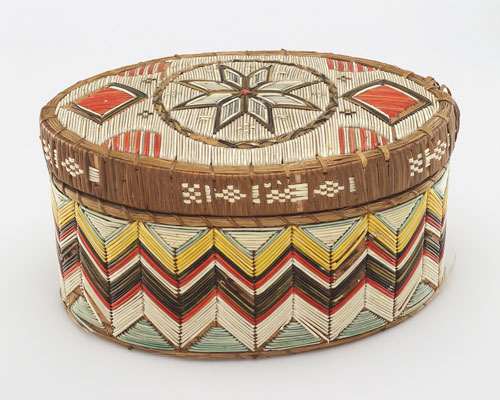Indigenous American cultures are richly diverse and cannot be confined to a single stereotype. This diversity is vividly expressed in their beading traditions, where each tribe contributes its own unique styles, techniques, and materials. Beading is not only an art form but also a vital element of cultural identity for many tribes.
The choice of beads and the beading methods are deeply influenced by geography and historical trade. As Indigenous peoples are dispersed across North America, the materials used for beading vary greatly. Before European contact, beads were made from natural resources such as shells, copper, bone, and stone. The arrival of glass beads in the 1800s introduced new possibilities. These beads, often called “pony beads” because they were transported by horseback and “seed beads” due to their small size, were produced in Eastern Europe and allowed for mass production of uniform, tiny beads.
In Indigenous apparel, beading is prevalent in various forms. It decorates everyday items like moccasins and hats as well as ceremonial garments, including headdresses worn during Pow Wows. Beading is both a decorative and ceremonial practice, reflecting its importance in cultural expression.
Beading techniques differ among tribes. The lazy stitch, common in the Great Plains and other regions, involves sewing beads in rows onto a base material, such as leather. Loom beading is known for its intricate geometric patterns and for creating belts, sashes, and other beadwork. The peyote stitch, which has ancient origins linked to Egyptian artifacts, is used by Indigenous peoples to embellish gourds and create ceremonial objects.
Color symbolism in beading varies by tribe, yet common themes are related to nature. Green typically represents the Earth, plants, and growth; blue signifies the sky, water, and emotional states; yellow symbolizes the sun, warmth, and positivity; orange denotes light and abundance; black represents darkness, mourning, and death; and red is associated with love, vitality, and conflict.
Beading serves as a powerful medium for storytelling and cultural expression. Through the choice of materials, techniques, and colors, Indigenous communities convey their unique histories and traditions, preserving a rich cultural heritage that continues to thrive.
Works Cited
Crazycrow. “Chevron Bead History ~ Their Importance to 15th-18th Century Trade.” Crazy Crow Trading Post, 15 Aug. 2023, www.crazycrow.com/site/history-of-venetian-chevron-beads/.
National Museum of the American Indian. “A Life in Beads.”
Nazanin. “Native American Color Meaning: Promise You Do Not Know! | inside Colors.” Dopely Colors, 8 Sept. 2021, colors.dopely.top/inside-colors/native-american-color-meaning-promise-you-do-not-know/#:~:text=III)%20Green%20in%20Native%20Americans%20Culture&text=They%20also%20considered%20green%20the.
Phillips, Nadia. “Aboriginal Culture | Sacred Colours.” Nadiaphillips, 21 Nov. 2017, www.aboriginalartuk.com/post/2017/11/21/aboriginal-culture-scared-colours#:~:text=Black%20represents%20the%20earth%2C%20marking.
Tschmiege. “Infuse Your Beadwork with Native American Symbolism.” Interweave, 6 July 2018, www.interweave.com/article/beading/infuse-your-beadwork-with-native-american-symbolism/#:~:text=The%20colors%20you%20use%20in. Accessed 17 July 2024.
West, Rebecca. “Origin of Glass Beads – Plains Indian Museum.” Buffalo Bill Center of the West, 9 July 2015, centerofthewest.org/2015/07/09/top-10-visitor-questions-to-the-plains-indian-museum-beads-glorious-beads/.














